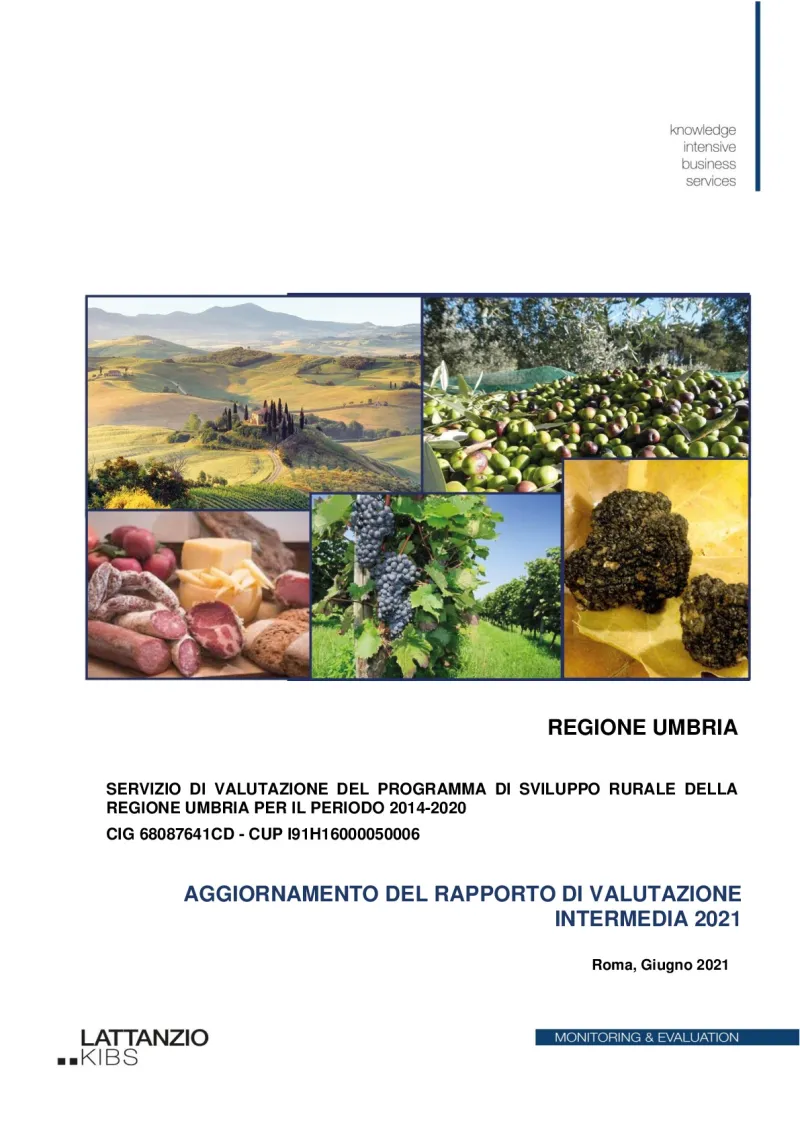2021 interim evaluation report update for the Umbria region
The interim assessment report of 2021 analyses the use of resources and verified the effectiveness and efficiency of the 2014-2020 Rural Development Programme (RDP) of the Umbria region.
- Italy
- 2014-2022
- Environmental impacts


The RDP of Umbria finances actions under all six rural development priorities, focusing on the conservation, restoration, and enhancement of ecosystems related to agriculture and forestry. It also enhances the competitiveness of the agricultural and forestry sectors and promotes social inclusion and economic development in rural areas.
The evaluation, therefore, focused on the response to Common Evaluation Questions (1 to 18), which refer to the results of the respective Focus Area (FA). It is considered premature to measure the programme's impacts, in particular with reference to the expected effects on the main socioeconomic variables, of which an estimate may be given in the ex post evaluation of the programme. As for environmental impacts, an assessment of the impact indicators that can be quantified to date within the responses to common evaluation questions relates to FA specifications undertaken.
The chosen methodological approach for the dataset analysis contains survey results of 2014-2020 RDP beneficiaries, favouring the use of a stratified sampling technique instead of basic sampling, such as simple random sampling. Thanks to the availability of a priori information on beneficiaries and the assumption of specific stratification criteria (e.g. intervention, geographical location and supply chain), it was possible to group statistical units into homogeneous subpopulations, which provided a sampling whose intrinsic properties generally give rise to more efficient estimates, at the same number of the sample extracted.
However, more methodological limitations have arisen from using 2020 as a 'post' reference year, given the known effects of a strong slowdown in economic activities due to the COVID-19 emergency and a lack of full availability of stable and definitive accounting data in the first months of 2021 (the investigation period).
The observed progress is positive but still far from achieving the objectives set for the end of the 2014-2022 programming period.
The intermediate evaluation is complemented by a summary of the main results from the analyses, a final judgement, and suggestions for strengthening the programme and its implementation.
The themes analysed are those related to the participation of women in the Umbrian agricultural sector, which represents a central theme of all regional rural development. It also examined the effectiveness of the communication strategy that influences, among other things, the quality of the relationship between the beneficiaries and the region and the self-assessment of the Local Action Groups that concerns the effectiveness of most interventions carried out under Priority 6 (social inclusion and economic development).
Author(s)
Lattanzio KIBS